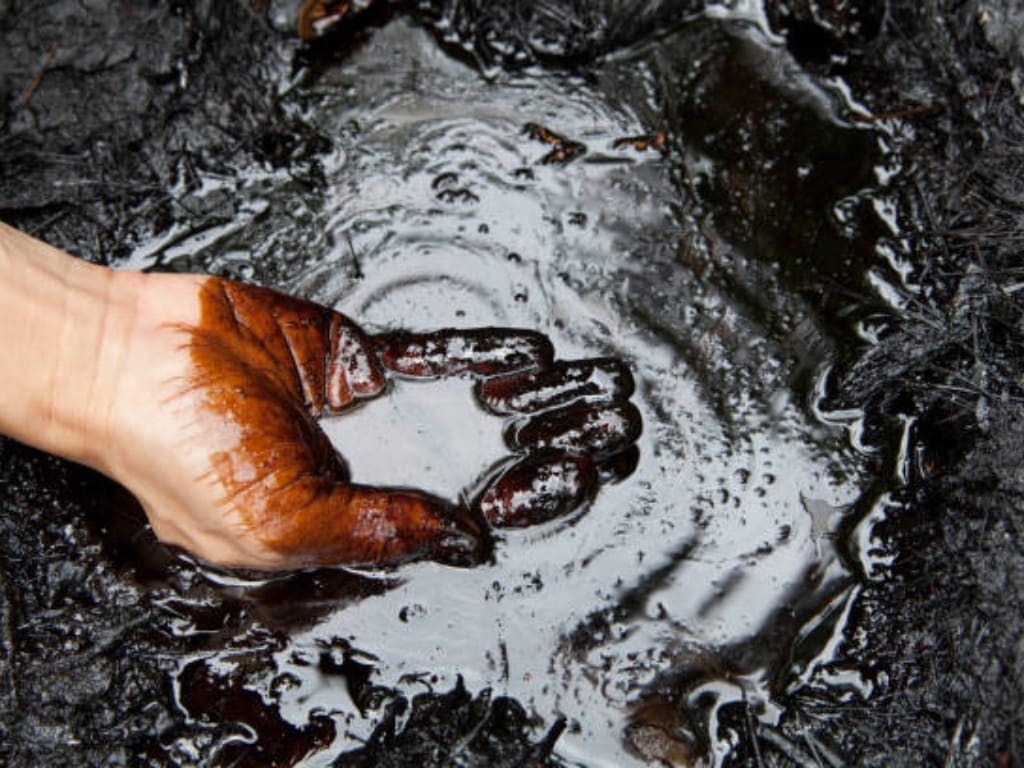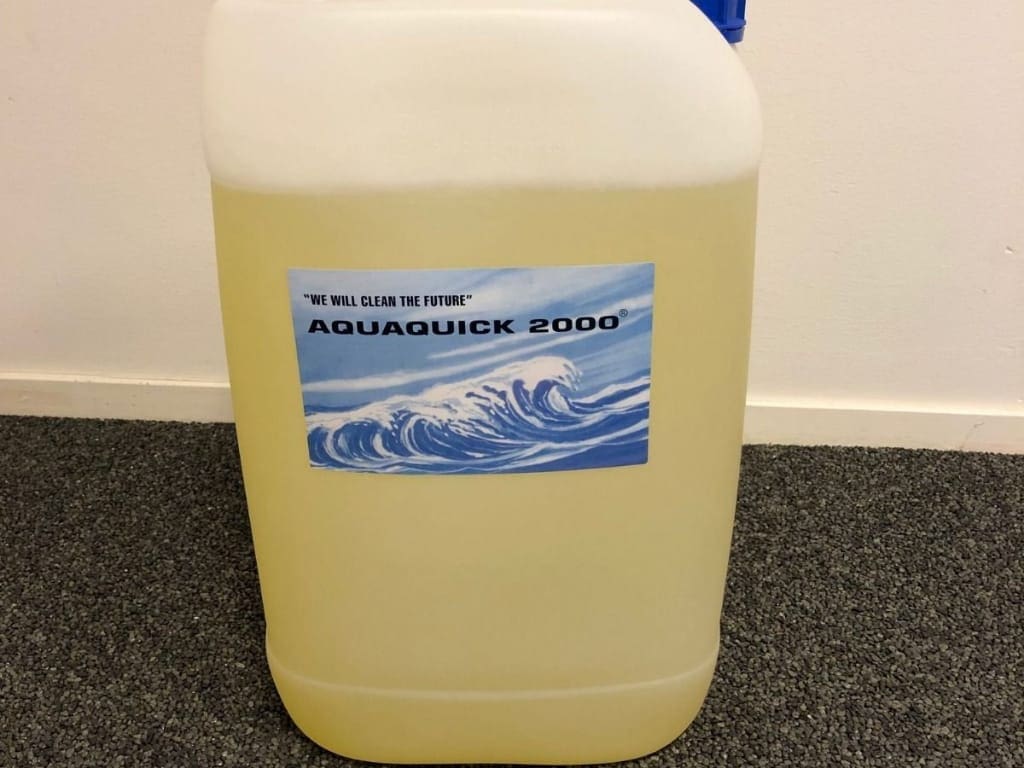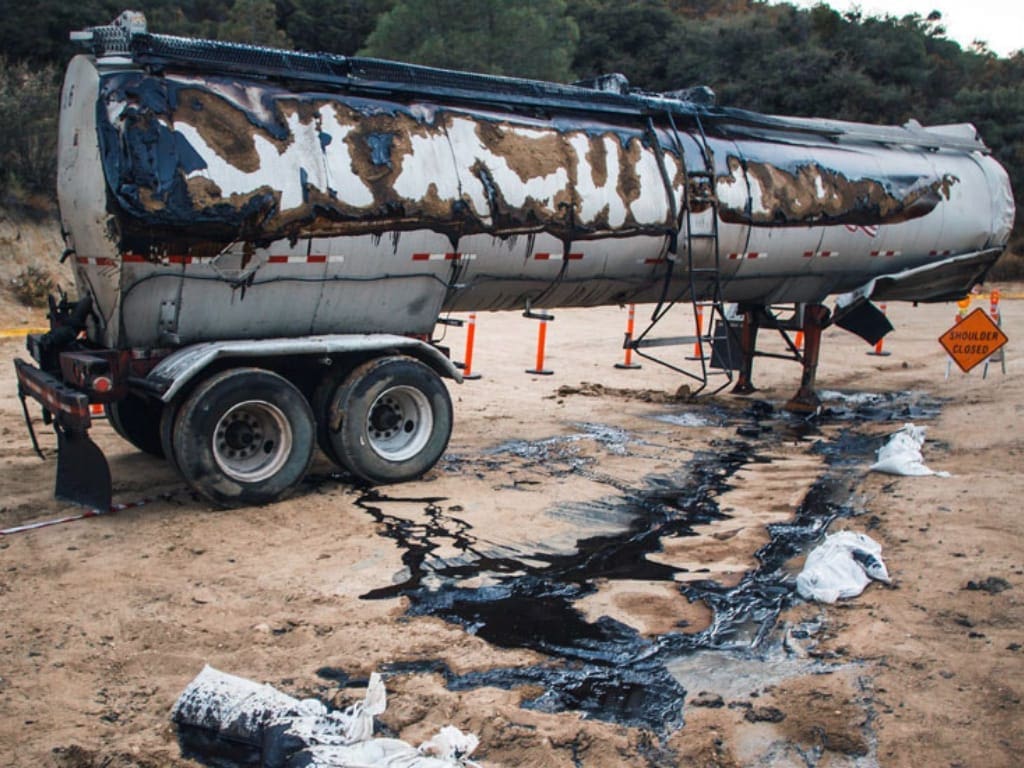Oil tank spill cleaning is critical because they are a significant environmental concern due to their devastating effects on marine ecosystems, wildlife, and human health. Whether the spill occurs on land or water, it necessitates immediate and effective response strategies to mitigate its impact. Oil tank spill cleaning involves complex procedures, specialized equipment, and adherence to stringent safety and environmental regulations. This comprehensive guide will cover the essential aspects of oil tank spill cleaning, including causes, response strategies, cleanup methods, and prevention measures.
Causes of Oil Tank Spills
Oil tank spills can also be attributed to operational lapses. These lapses occur during the routine operations of loading, unloading, and transferring oil. For instance, failing to properly secure valves and hatches can lead to accidental releases of oil. Similarly, errors in monitoring tank levels can result in overfilling, causing oil to overflow. Furthermore, inadequate training of personnel in handling and emergency response procedures can exacerbate the risks associated with operational activities. Ensuring rigorous operational protocols and comprehensive training programs is crucial to minimize these risks.
Another significant factor contributing to oil tank spills is aging infrastructure. Many oil storage and transportation facilities have been in operation for decades, often beyond their intended lifespan. Over time, tanks, pipelines, and other equipment can deteriorate due to corrosion, fatigue, and general wear and tear. This aging infrastructure is more susceptible to leaks and structural failures. Regular maintenance, inspection, and timely replacement of outdated equipment are essential to prevent spills caused by the degradation of infrastructure.
Geopolitical factors also play a role in the occurrence of oil tank spills. In regions experiencing political instability or conflict, oil facilities may become targets for sabotage or vandalism. Additionally, insufficient regulatory oversight and enforcement in certain areas can lead to inadequate safety standards and practices. International tensions and economic sanctions can further strain the resources available for maintaining oil infrastructure, increasing the likelihood of spills. Promoting geopolitical stability, enhancing regulatory frameworks, and fostering international cooperation are vital measures to address these underlying causes.
Oil tank spills can be caused by various factors, including:
- Human Error: Mistakes during oil transfer, improper handling, and operational negligence.
- Equipment Failure: Mechanical breakdowns, corrosion, and structural failures of tanks and pipelines.
- Natural Disasters: Earthquakes, hurricanes, and floods can damage storage facilities and transportation infrastructure.
- Accidents: Collisions involving oil tankers, trucks, and trains can result in significant spills.
- Vandalism and Sabotage: Intentional acts of damage to oil storage and transportation facilities.
Immediate Response to Oil Tank Spills

Immediate response to oil tank spills is paramount to mitigating environmental and health impacts. The first step involves a thorough assessment and containment of the spill. Responders must quickly evaluate the extent of the spill, the type of oil involved, and the affected area. This assessment informs the deployment of appropriate containment measures, such as booms and barriers, to prevent the oil from spreading further. Rapid containment is crucial to protect sensitive environments, such as wetlands, coastal areas, and drinking water sources. Additionally, deploying skimmers and vacuum trucks helps in the initial recovery of spilled oil, reducing the immediate environmental footprint.
Simultaneously, notification and mobilization are critical components of the immediate response. Authorities at local, state, and federal levels must be promptly informed to coordinate a comprehensive response. Mobilizing trained response teams equipped with the necessary protective gear and cleanup equipment is essential for an effective and safe operation.
These teams work in coordination with environmental agencies and other stakeholders to implement the spill response plan. Protecting the health and safety of personnel is a top priority, necessitating the use of personal protective equipment (PPE) and, if necessary, the evacuation of affected areas. Swift, coordinated action during the initial stages of an oil tank spill cleaning is vital to minimizing long-term environmental damage and facilitating a more efficient cleanup process.
Immediate response is crucial to minimize the environmental impact of an oil spill. The key steps include:
1. Assessment and Containment
- Initial Assessment: Quickly evaluate the spill’s extent, type of oil, affected area, and potential risks.
- Containment: Use booms, barriers, and other containment devices to prevent the spread of oil.
2. Notification and Mobilization
- Notify Authorities: Inform relevant local, state, and federal agencies about the spill.
- Mobilize Response Teams: Deploy trained personnel, equipment, and resources to the spill site.
3. Safety Measures
- Protect Personnel: Ensure responders use personal protective equipment (PPE) to prevent exposure to hazardous substances.
- Evacuate Area: Evacuate affected areas if there is a risk to human health or safety.
Oil Tank Spill Cleaning Methods

Effective oil tank spill cleaning methods vary depending on the spill’s location, the type of oil, and environmental conditions. Common oil tank spill cleaning techniques include:
1.Mechanical Recovery
- Skimmers: Devices that remove oil from the water surface. They can be weir skimmers, drum skimmers, or belt skimmers.
- Vacuum Trucks: Used to suck up oil from surfaces and store it in tanks for disposal.
2. Chemical Dispersants
- Dispersant Spraying: Chemicals that break down oil into smaller droplets, enhancing natural biodegradation. Must be used judiciously to avoid harming marine life.
3. Bioremediation
- Microbial Degradation: Utilizing microorganisms to break down and consume oil, converting it into less harmful substances.
- Nutrient Enrichment: Adding nutrients to stimulate the growth of oil-degrading bacteria.
4. Sorbents
- Absorbent Materials: Materials like pads, booms, and loose particles that soak up oil.
- Adsorbents: Materials that attract and hold oil on their surface, such as certain clays and polymers.
5. In-Situ Burning
- Controlled Burns: Burning the oil on the water’s surface under controlled conditions to reduce its volume. This method is effective but can produce air pollution.
- Hand Tools: Using shovels, rakes, and other tools to remove oil-contaminated soil and debris.
- Pressure Washing: High-pressure water jets to clean oil from rocky shorelines and man-made structures.
Specialized Equipment for Oil Tank Spill Cleaning
Effective oil tank spill cleaning response requires specialized equipment, including:
- Booms: Floating barriers that contain and concentrate oil for easier recovery.
- Skimmers: Devices that separate oil from water, often used in conjunction with booms.
- Dispersant Sprayers: Aircraft, ships, and portable units that apply chemical dispersants over large areas.
- Sorbents: Materials designed to absorb or adsorb oil, available in various forms like pads, rolls, and particulate.
- Vacuum Systems: Portable and truck-mounted units for suctioning oil from surfaces and water.
- Temporary Storage: Portable tanks and containers for storing recovered oil and contaminated materials.
- Personal Protective Equipment (PPE): Gear to protect responders from exposure to hazardous substances, including gloves, masks, and suits.
Environmental Impact of Oil Spills
Oil spills can have catastrophic effects on the environment, including:
- Marine Life: Oil can smother marine organisms, impair their mobility, and disrupt their reproductive systems. Birds, fish, and marine mammals are particularly vulnerable.
- Ecosystems: Coastal habitats like marshes, mangroves, and coral reefs can suffer long-term damage, affecting biodiversity and ecosystem services.
- Water Quality: Oil contamination can degrade water quality, affecting drinking water sources and recreational areas.
- Soil Contamination: Oil spills on land can contaminate soil, affecting plant life and potentially entering the food chain.
- Air Quality: Volatile organic compounds (VOCs) released during spills can affect air quality, posing health risks to humans and animals.
Regulatory Framework and Guidelines for Oil Tank Spill Cleaning
Oil tank spill cleaning response is governed by a comprehensive regulatory framework to ensure prompt and effective action. Key regulations and guidelines include:
The Oil Pollution Act (OPA) of 1990
- Enacted in response to the Exxon Valdez spill, this U.S. law strengthened regulations on oil spill prevention and response.
- Requires oil storage facilities and vessels to have spill response plans and financial resources for cleanup.
International Convention for the Prevention of Pollution from Ships (MARPOL)
- A global treaty that regulates pollution from ships, including oil spills need oil tank spill cleaning.
- Sets standards for vessel construction, operation, and oil tank spill cleaning response.
National Contingency Plan (NCP)
- The U.S. government’s blueprint for responding to oil tank spill cleaning for hazardous substance releases.
- Outlines the roles and responsibilities of federal, state, and local agencies.
Environmental Protection Agency (EPA) and U.S. Coast Guard
- Primary agencies responsible for oil tank spill cleaning response and enforcement in the United States.
- Develop and implement response plans, conduct drills, and oversee cleanup operations.
Case Studies: Notable Oil Spill Incidents
Studying past oil spill incidents provides valuable insights into response strategies and lessons learned. Some notable cases include:
1. Exxon Valdez (1989)
- One of the most infamous spills, the Exxon Valdez tanker released approximately 11 million gallons of crude oil into Prince William Sound, Alaska.
- Highlighted the need for improved response planning and led to the passage of the OPA 1990.
2. Deepwater Horizon (2010)
- The largest marine oil spill in history, releasing over 210 million gallons of oil into the Gulf of Mexico.
- Demonstrated the challenges of deepwater drilling and the importance of robust safety measures and response capabilities.
3. Prestige (2002)
- The sinking of the Prestige tanker off the coast of Spain resulted in a spill of over 17 million gallons of oil.
- Emphasized the need for international cooperation and improved ship structural integrity.
Prevention Measures
Oil tank spill cleaning is paramount to protecting the environment and human health. Key prevention measures include:
- Conduct routine inspections and maintenance of storage tanks, pipelines, and transportation vessels to identify and address potential issues.
- Implement corrosion protection measures and upgrade aging infrastructure.
- Utilize advanced monitoring and detection technologies, such as remote sensing, drones, and automatic shutdown systems, to detect and respond to leaks promptly.
- Employ double-hulled tankers and vessels to reduce the risk of spills in the event of a collision or grounding.
- Provide regular training for personnel involved in oil handling and transportation to ensure they are aware of safety protocols and response procedures.
- Conduct frequent drills and simulations to test and improve response capabilities.
- Adhere to national and international regulations governing oil tank spill cleaning, prevention and response.
- Maintain updated spill response plans and ensure they are readily accessible and understood by all relevant personnel.
- Raise awareness about the importance of oil tank spill cleaning, prevention and response within the community and industry.
- Engage with local communities and stakeholders to develop collaborative response plans and ensure effective communication during incidents.
AQUAQUICK 2000: Revolutionizing Oil Tank Spill Cleaning
AQUAQUICK 2000 is an innovative, environmentally friendly solution designed to address oil tank spills effectively. As a biodegradable cleaning agent, it offers a sustainable approach to mitigating the impact of oil spills on ecosystems, while also ensuring safety and efficiency in the cleanup process. This detailed examination explores the unique properties, mechanisms, and benefits of AQUAQUICK 2000 in oil tank spill cleaning.
Unique Properties and Mechanism of Action
AQUAQUICK 2000 stands out due to its biodegradable nature and its formulation, which includes natural, non-toxic ingredients. This composition makes it safe for use in various environments, including sensitive ecological areas. The cleaning agent works through a process known as emulsification, where the oil is broken down into smaller droplets that are then dispersed and biodegraded naturally. This mechanism is crucial for reducing the environmental footprint of oil spills and promoting faster recovery of affected ecosystems.
When applied to an oil spill, AQUAQUICK 2000 interacts with the oil molecules, breaking the bonds that hold them together. This action transforms the oil into a state that is more easily digestible by naturally occurring microorganisms. These microorganisms then metabolize the oil, converting it into harmless substances like carbon dioxide and water. This bioremediation process is highly effective, particularly in marine environments where natural microbial activity is abundant.
Application and Effectiveness

The application of AQUAQUICK 2000 in oil tank spill cleaning involves several steps to ensure maximum effectiveness. Initially, the area of the spill is assessed to determine the appropriate amount of cleaning agent needed. AQUAQUICK 2000 can be applied using various methods, including spraying, soaking, or using it in conjunction with mechanical recovery equipment such as skimmers and vacuum trucks.
In the case of a waterborne oil spill, AQUAQUICK 2000 is sprayed over the oil-contaminated surface. The agent quickly emulsifies the oil, breaking it into tiny droplets that disperse throughout the water column. This dispersion reduces the risk of the oil reaching shorelines and affecting marine life. For spills on solid surfaces or within oil storage facilities, the cleaning agent can be applied directly to the affected area, where it works to loosen the oil, making it easier to remove using conventional cleanup methods.
Field studies and practical applications have demonstrated the effectiveness of AQUAQUICK 2000 in various scenarios. It has proven particularly useful in reducing the overall cleanup time and improving the thoroughness of oil removal. Its ability to work in conjunction with natural biodegradation processes means that even after the initial cleanup, residual oil continues to be broken down, further mitigating long-term environmental impacts.
Environmental and Safety Benefits
One of the significant advantages of AQUAQUICK 2000 is its environmental safety. Traditional oil spill cleaning methods, such as the use of chemical dispersants, often pose risks to marine life and ecosystems. In contrast, AQUAQUICK 2000’s non-toxic, biodegradable formulation ensures that its use does not introduce harmful substances into the environment. This makes it an ideal solution for spills in sensitive areas such as coastal zones, wetlands, and marine habitats.
Additionally, the safety profile of AQUAQUICK 2000 extends to human health. Cleanup personnel are not exposed to hazardous chemicals, reducing the risk of health issues associated with prolonged exposure to toxic substances. This aspect is crucial for ensuring the safety and well-being of those involved in spill response and cleanup operations.
AQUAQUICK 2000 represents a significant advancement in oil tank spill cleaning technology. Its environmentally friendly composition, effectiveness in emulsifying and biodegrading oil, and safety benefits make it an invaluable tool for addressing the challenges posed by oil spills. By leveraging the natural processes of biodegradation, AQUAQUICK 2000 not only facilitates immediate cleanup efforts but also promotes the long-term recovery of affected ecosystems. As the industry continues to seek sustainable solutions for environmental protection, AQUAQUICK 2000 stands out as a robust and reliable option for managing oil tank spill cleaning responsibly and effectively.
Conclusion
Oil tank spill cleaning is a critical aspect of environmental protection, requiring immediate and coordinated action to mitigate the devastating impacts of oil spills. Understanding the causes, response strategies, and oil tank spill cleaning methods is essential for effective spill management. By investing in prevention measures, adopting advanced technologies, and adhering to regulatory frameworks for oil tank spill cleaning, we can minimize the occurrence and consequences of oil spills, safeguarding our ecosystems and communities for future generations.














